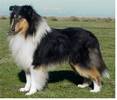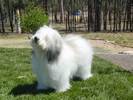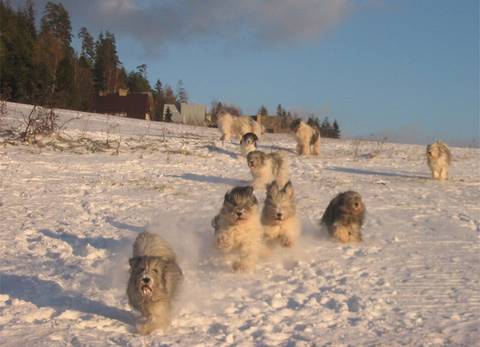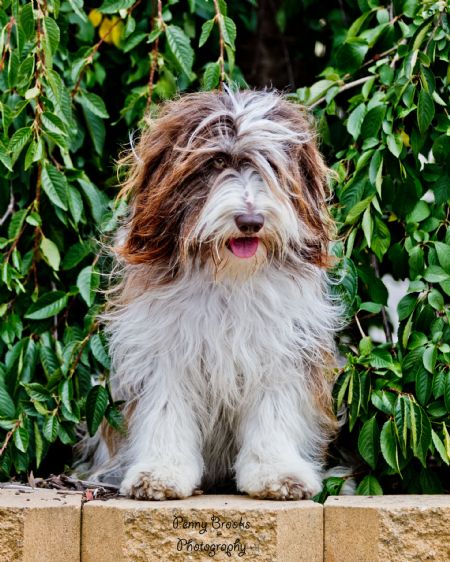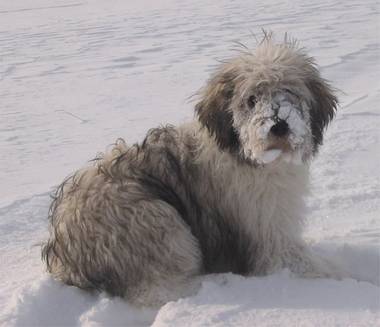|
|
About the PON
Above photo courtesy of Barbara Rayska-Swist
The first thing you must do is learn how to say the name of the medium size, shaggy little dog native to Poland; the Polski Owczarek Nizinny. It is pronounced as "pol skee, ahv chah rek, nie ginnee" . Obviously the first word Polski means Poland, Owczarek translates to sheepdog and Nizinny meaning lowland, the area as to which the breed is native. Poland has three native breeds two of which are Owczarek's, the other is known as the Tatrazanski or Tatra meaning mountain region. In many countries this little dog is simply known as PON, in others they are known as Nizinnies. Which ever title you give, this adorable little dog with the big personality will always endure himself to your heart. The PON has a history thought to date well back into the 13th Century, it could almost be called an "ancient" breed. Its roots are likely to have descended from other nomadic breeds such as the Puli, the Llasa Apso and Tibetan Terrier, among others. In later years, the PON will have contributed to the development of the Bearded Collie and the Old English Sheepdog. The early sheep herders of Poland relied heavily on their PON, not only to herd the flocks, but also in a guarding roll. The PON was found to be soft and gentle enough to be entrusted to look after the lambs and yet tenacious enough to ward off any predators that may have come looking for a free feed. This trait they still retain today. At the turn of the 2oth century sheep farming was becoming less popular and hairy dogs were becoming less and less in demand with the farmers as a working dog. They had lost their usefulness. The first record of the breed being exhibited at a dog show was in 1924 by Countess Maria j. Czetwertynska, she exhibited 2 PON's on this occasion. In 1937 the Working Dogs Society invited input from owners of the Polish Sheepdog regarding breed numbers, location and descriptions of the dogs, this certainly helped with the re-igniting of the interest in the breed. The year 1941 was not kind to the breed as war had broken out and rations were scarce, sacrifices had to be made. If not for a few dedicated breeders/owners of the PON, the breed would certainly have been close to extinction. After the war had ended the Polish Kennel Club was formed. The investigation of the breed was resumed and carefully selected dogs were chosen to be registered to be enabled to be used in a breeding program. After careful selection and breeding, and only after 3 generations of known ancestors could a certified, registered pedigree be issued. The pure bred PON had been established. In 1957 the first registered kennel was established in Poland. The breed was officially recognised by The Federation Cynologique Internationale (FCI) in 1959, with changes to the standard being made in 1963 and 1973. When you first look at the PON you should see a medium size, cobby dog covered by a profuse but well fitting, sometimes slightly wavy coat. The size of the adult PON is still the same as it was written in the original 1959 standard, males 18 - 20 inches (45 - 50 cm's) at whithers and females 17 - 19 inches (42 - 47 cm's) at withers. He is an extremely strong dog, which, until you actually put your hands on him, and feel under the coat, you do you not fully appreciate. You will be surprised by the amount of strength he carries. The head appears larger than it actually is due to the profuse hair that is carried forward and over the eyes and bridge of his over large nose. The ears are formed close to the skull and also help accentuate the head proportion. The head is carried on a moderate length of neck but never high and never with a dew lap. The ideal is between the positions of 10 O'clock and 10.30. The gait of the PON is more of an amble, being able to move efficiently and effortlessly whilst covering the most ground. He will start off on a slow trot, gradually building up momentum. He will swing his front legs well out to his nose whilst his rear legs propel the body forward with a very even motion. Whilst all this effort is taking place his back remains firm and level. The PON has been also known to pace, but this is quite rare. The coat of the show PON must always be shown in his "natural" state, no trimming allowed, except for around the toes and for hygienic purposes. The coat must never be groomed to resemble that of a Bearded Collie. The outer coat is harsh to the touch whereas the under coat is soft and thick, almost luxurious. Coat colour is immaterial but all coats carry a natural fading gene. When you are examining the PON, do not expect him to immediately welcome you with open arms. He will assess you as closely as you are assessing him. If you are lucky, and with his masters approval, you will be allowed to approach him and even touch him. The PON still retains his high guarding instinct and as such is wary of strangers. This trait also makes him a perfect companion and guarder of all your possessions. The Polish Lowland Sheepdog is not a dog for everyone. He is a breed that requires a high level of maintenance to ensure his coat is kept matt free. Some people find that clipping off the coat solves this problem, but then you are loosing what was probably one of the most attracting attributes that brought your interest into this breed. A good brushing at least two to three times per week should keep your fully coated PON looking his best at all times. Of course bathing should also be a part of this regular routine, with it at least being done on a two weekly basis. Between bathing, a simple sprinkling of baby talcum powder with his brushing regime should be sufficient to keep the dirt at bay. The PON is not a naturally dirty dog, as with all double coated breeds, the dirt just simply dries and falls off without even penetrating through to the softer undercoat. The PON is also a dog that requires a moderate amount of exercise. The simple way to do this is by simply playing ball, it is said that a PON would sell his soul for a tennis ball. He is also one to be extremely comfortable sitting on your lounge or resting in bed with you, he is not one to be left alone for great length of time, you would probably not be happy with how he manages to amuse himself. Some PON's are also known hoarders. Don't be surprised if at a dinner party and he is being ignored you suddenly find your most intimate pieces of clothing being brought out from the bedroom to be shared with your fellow guests. Having said all that, once you have lived with a PON you will never live without one.
For further information on this wonderful little dog with the unpronounceable name please contact us direct.
Terry & Aileen Jenkins Canberra Region, NSW, Australia Email : [email protected] |
